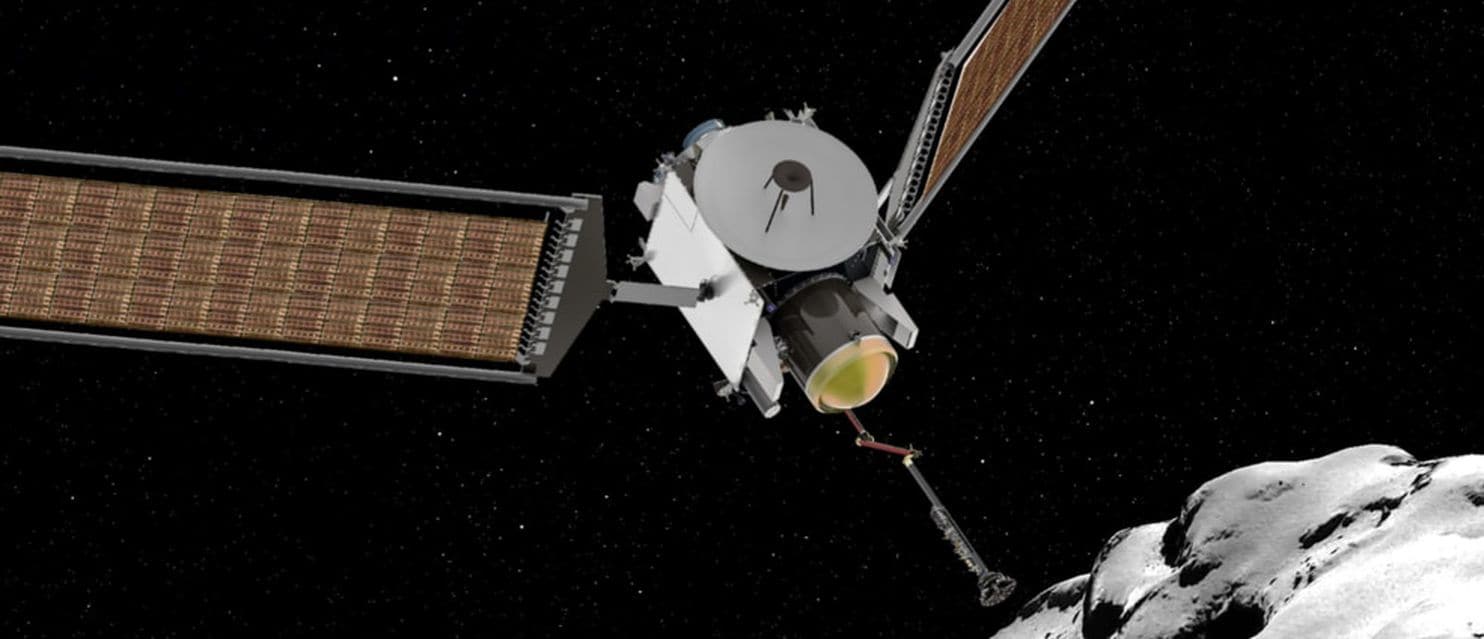 Dragonfly is a flying research apparatus that uses the characteristics of the Titan's environment, for example, a dense atmosphere. With its help, scientists hope to explore different regions of this planetoid in order to learn more about the features of the structure of Titan, the characteristics of its atmosphere and surface
Dragonfly is a flying research apparatus that uses the characteristics of the Titan's environment, for example, a dense atmosphere. With its help, scientists hope to explore different regions of this planetoid in order to learn more about the features of the structure of Titan, the characteristics of its atmosphere and surfaceThe other day, NASA
published information about ideas for its new missions. One of them involves the creation of a flying robot to survey the satellite of Saturn Titan, the second - the collection of samples from the comet core. The ideas of both missions were selected from 12 projects proposed as part of New Frontiers.
As for the first mission, the robot created within its framework will be called Dragonfly (“dragonfly”). This device is planned to be equipped with folding screws, which will allow it to break away from the surface of Titan and quickly travel along the “air” path of several hundred kilometers to move to a new location that interested scientists. In addition, the robot will be equipped with specialized sensors for the detection of organic substances of various kinds and other scientific equipment.
The flight will be possible due to the powerful atmosphere on Titan. "Dragonfly" on arrival at the satellite of Saturn will study the characteristics of its structure. In particular, scientists hope to find out if it is true that there is a large amount of liquid water under the frozen ice crust on Titan (this is, in fact, the ocean).
And this, as you know, is an environment where life or even individual elements of life can exist. This was stated by Elizabeth Tartl, a researcher at Johns Hopkins University. With the help of Dragonfly, experts will be able to assess what is happening with the organic circulation on Titan now and what happened in the past.
As for the second mission, it is called
CAESAR (Comet Astrobiology Exploration SAmple Return). Its goal is to select a sample of the nucleus of the comet Churyumov-Gerasimenko, which has already been surveyed by the
Rosetta spacecraft of the European Space Agency. The study of the nucleus was conducted from 2014 to 2016. Now scientists are already from NASA hoping that they will be able to create a spacecraft that can fly up to the comet, sit on its surface, take samples and fly back to Earth. True, in the second case a very long-term expedition is planned. The CAESAR machine will return to Earth no earlier than 2038, or even later.
The agency’s sampling mission for the comet’s substance is not the first time either. This has happened before. True, then the spacecraft took away some dust from the "head" of the comet. If everything works out this time, then for the first time people will get their hands on significant samples of the cometary substance.

“Comets are one of the most significant objects in science in the solar system. Despite the seeming knowledge of comets, science doesn’t know much about them, ”says Steve Skyres, a researcher at Cornell University.
Some scientists believe that it was comets that “brought” elements of the future life to Earth many billions of years ago. Samples from comet Churyumov-Gerasimenko will provide additional evidence of this point of view.
So far, the selection of two of the proposed 12 missions was carried out previously. Final approval of selected projects will take place in July 2019. Among other ideas involved in the selection, were the study of Saturn, Venus or asteroids - neighbors of Jupiter. It was also proposed to send a probe to another satellite of Saturn - Enceladus. In the latter case, scientists will not abandon the idea completely, but will study the technical features of the project. Perhaps in the future this project will also be implemented.
New Frontiers - a project to expand the "scientific horizons." Within its framework, three missions have already been completed: New Horizons (flying past Pluto in 2015), Juno - the launch of a spacecraft into Jupiter’s orbit, OSIRIS Rex - a spacecraft that will visit the
Bennu asteroid in 2023, and also collect rock samples from this object .